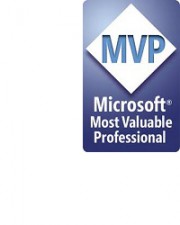One colleague of mine raised some intriguing points on why SQL Server’s User Defined Datatypes can’t be edited. You do the editing process by dropping the datatype and recreate the new one. His position was that, he avoided using UDDs simply because of this limited mechanisms. This has led me to think of another question.
The question really is .. how often do we need to change the definition of our data? In its lifetime, I should say it should not be changed at all once our understanding of its nature is final. If the data definition we had changes from time to time, I would say that there is a possible problem in our foresight or understanding of the nature of that data entity. If that is the case, it should not be a good reason for us to define a UDD for that data entity. Worse, If we are not sure of a data entity’s definition, we have to get back to the drawing board and try to understand its nature once again if indeed we are sure of its definition. This problem also reflects the lack of resolve when determining the true nature of certain data entities.
However, I do recognize, that by the time we really need to change the definition of our data entity, I would surmise that the reason for doing so is very significant and justifiable as it will have a great impact in both our database and our application. This issue brings to us the question on how clear are pictures in our minds.
Here is my case with a few examples to show how I deal with the situations when understanding and defining data types.
Scenario #1: How stable can we define a data type?
BirthDate as DATETIME
EmailAddress as NVARCHAR(320)
Scenario #2: Questionable Candidates for UDD Creation
CustomerID as CHAR(5)
Scenario #3: The Lack of Understanding Example
Age as INTEGER – (assuming in Years)
Scenario #4: Things Change Over Time
PhoneNumber as CHAR(7)
The scenarios above are the usual things I encounter when one defines the type of a certain data.
In scenario #1, how often do we need to change datatypes? Should we have these kinds of data and have clear understanding of their very nature, defining UDDs for these would be sound. Thus, EXEC sp_addtype BirthDateType, datetime, ‘NULL’ would almost guarantee us that we will NOT encounter problems in the future or would require us to edit its definition.
Scenario #2 is a classic example of our lack of foresight or anticipation. A good DB designer could easily spot this. In the example, it is just a matter of time before we make it to CHAR(10) or CHAR(15) or better yet CHAR(25). I personally declare IDs as VARCHAR(255) as I don’t have a habit of making ID types as one my system keys. I’d rather have IDs as VARCHAR(255) and indexed them with UNIQUE constraint making them candidates for user consumable keys. As for me, I won’t be inclined to have a UDD for this situation.
Scenario #3 is also a classic on how we fail to understand the very nature of certain data. In most of us, without batting an eyelash, it is almost automatic that we declare Age (in years) as INTEGER, only to find out later on that we need to store it like 10.25 for 10 Years and 3 Months.
Scenario #4 forces us to change. It has been decades that Philippines had 6 or 7 digit local phone numbers. We could have probably saved on a few bytes and declared it to CHAR(7). Now we are seeing 8 digit phone numbers and we need to adapt.
If we had defined UDDs, for all the samples above, scenarios #3 and #4 could probably force us to EDIT our UDDs. Using EXEC sp_addtype PhoneNumberType, CHAR(7), ‘NULL’, we have defined a UDD for #4. To drop and create a new UDD for this to support CHAR(8), this could create a major headache in our app. We will need to revisit our SPs and character validation codes, the formats and pics we defined, the CONSTRAINTS we declared and other stuff on both our DB and the apps and check all support related to PhoneNumberType. How do I avoid this? Should I need support CHAR(8), I would definitely NOT do an “EDIT” by dropping and recreating my UDDs. Instead, I’ll create a new one with
EXEC sp_addtype PhoneNumberType2, CHAR(8), ‘NULL’
and subsequently create new ‘phone’ type columns and define them as PhoneNumberType2. Eventually, I will have to deprecate PhoneNumberType in favor of PhoneNumberType2 but that would be another story.
This way we have zero impact on our apps and databases and have avoided possible headaches.
